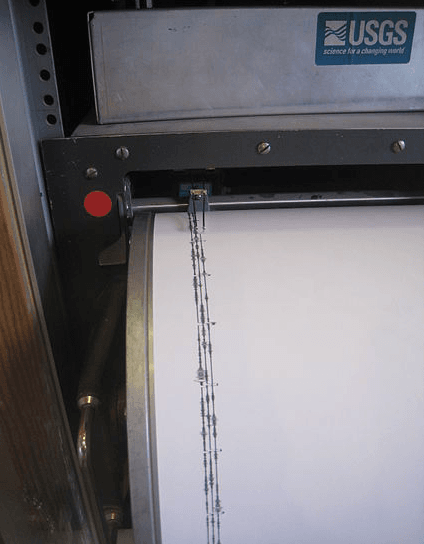When you think “earthquake,” you don’t exactly think of Texas but it continues to be seismic central in Dallas. On Sunday, January 11 at 7:46pm, the Richter scale hit magnitude 2.5. This newest shaker was centered in the City of Irving near the former site of the Texas Stadium, the site of much of the rumbling in North Texas. Although there has been no damage, it has rattled nerves, caused schools to run earthquake drills, and gotten some folks to ask about earthquake insurance policies.
The Dallas Morning News reported that the latest tiny temblor marked the 16th occurance. The most notable of the shakers came on Tuesday, January 6. It was a magnitude 3.5 and it was felt citywide across Dallas. The Sunday night quake was felt from East Dallas to Irving to Northwest Dallas, based on emails and tweets.
Previously, on Thursday, January 8, two mild shockwaves each measuring 1.9 magnitude rolled through the Dallas suburb of Irving at 4:08am and 7:24am, according to NBC-5. Both were centered near the same former site of Texas Stadium where 12 earthquakes already rocked the area to varying degrees. Later that day, a 2.7 magnitude shaker occurred at 2:12, approximately four miles west-northwest of Midlothian in Ellis County.
These are not big quakes by California standards but, relatively speaking, Texans are not used to feeling like they are living on top of the San Andreas Fault, which runs across so much of the state of California. The frequency of the shakers has not calmed any nerves in Dallas either.
In response to all the ground movement, on Friday, January 9, the Dallas Independent School District (ISD) Department of Emergency Management issued an earthquake preparedness information memo outlining procedures. It noted that before 2008, North Texas had no real discernible seismic activity. The memo stated that since that time, over 120 earthquakes have occurred in North Texas, mainly centered in Irving.
They cited US Geological Survey (USGS) that “a general guideline for quakes at or above a magnitude of 4.5 or 5.0 could result in damage to infrastructure or buildings depending on the depth of the quake.” So far, none of the quakes have been that strong.
Dallas ISD emphasized that scientists did not know the extent or the cause of current increased earthquake activity. Breitbart Texas reported that the Balcones Fault line runs under the affected area but seemed to be have been dormant or undetectable until 2008. Others believe that hydraulic fracturing (“fracking”) for oil and natural gas is responsible but that, too, is only speculative.
All this shaking was enough to prompt Dallas mayor Mike Rawlings to announce plans to work with geological experts, Irving city leaders and scientists from Southern Methodist University (SMU), Fox-4 reported on January 7.
SMU’s scientists have placed monitoring devices in the area where the quakes have emanated with the hope of finding a cause. Fox-4 confirmed that scientists are looking at all the possibilities including natural activity on fault lines and injection wells for waste water used in oil and gas extraction.
The state’s Railroad Commission, which regulates oil and gas drilling, is also investigating this matter, according to the Dallas Morning News. They hired state seismologist Craig Pearson to sift through data and see if the wells that are drilled to drive wastewater from fracking deep into the earth are to blame.
Pearson told the Dallas newspaper outlet that the two gas wells in the area have been inactive since 2012. He added that there weren’t any changes to the subsurface based on oil and gas production and he believed that the Irving quakes were unrelated to oil and gas operations in the Barnett Shale.
The local Sierra Club, a environmental protection group, thought otherwise. Irving Mayor Beth Van Duyne said that some people are blaming Dallas Area Rapid Transit (DART) and Highway 183 construction, others hold the implosion of the Old Texas Stadium liable and still others are pointing to the drought, the Dallas Morning News also reported.
Following the most nerve-wracking of the shakers, a 3.5 shockwave on January 6, and, in response to the frequency of Irving-centered tremors, Irving ISD opted to hold earthquake drills the next day, FOX-4 reported.
“The safety of our students and staff is always our top priority. Like many residents, we are following the recent earthquakes that have been felt in Irving and surrounding cities,” an Irving ISD spokesperson told FOX-4 in a statement. “In Irving ISD, we are prepared. We have earthquake procedures in place and are continuing to educate our students and staff on the proper actions to take during and after earthquakes.”
They even showed students a “Drop, Cover, Hold On!” video.
Despite the earthquake swarms, Texas is considered low risk for seismic catastrophes. Yet, some panicky Dallas homeowners phoned their insurance agents to find out about getting earthquake insurance, although Randall Guttery, director of real estate programs at the University of Texas at Dallas’ Jindal School of Management, told the Dallas Morning News that he wouldn’t buy it because earthquakes are still such a rare occurrence in Texas.
“I suspect that North Texas homeowners who’ve felt the series of shakes don’t buy that right now. They’re genuinely rattled, and as a Californian, I can understand their fear,” he added.
Follow Merrill Hope on Twitter @OutOfTheBoxMom.

COMMENTS
Please let us know if you're having issues with commenting.